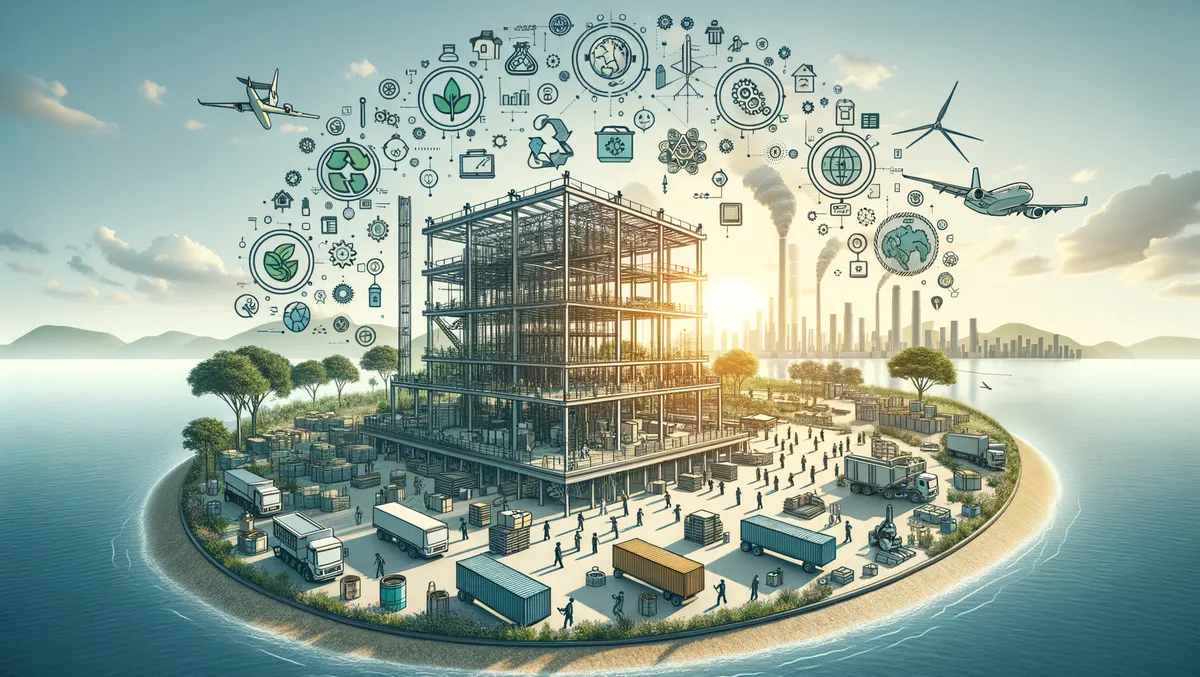
Tech removing barriers to green construction practices
The construction industry across Asia Pacific (APAC) is focussing on sustainable practices, driven by the global push to achieve net zero carbon emissions and the mounting demand from national and regulatory bodies, as per the recent whitepaper by Autodesk, Inc. The paper, called 'Building Net Zero and The Role of Data in Green Construction', dives into the current sustainability landscape in APAC and explores prospective solutions related to green construction.
"Construction is becoming green construction, in every country and sector. As Australia and the world continue to respond to the challenge of climate change, powerful construction technology and digital tools mean the call for sustainability will no longer be a barrier but an enabler of progress and profits", stated Sumit Oberoi, Industry Strategy Manager at Autodesk Construction Solutions.
In 2020, the Asia Pacific region was responsible for over half (53%) of the world's greenhouse gas emissions, producing 18.3 billion metric tonnes of carbon dioxide. In the region, the building, construction, and manufacturing sectors were responsible for 4% and 17% of greenhouse gas emissions respectively. Mr Oberoi emphasises that data is vital to address the environmental impact of the construction industry, which includes damaged ecosystems due to mining and logging, pollution, high energy use in material manufacturing, high CO2 emissions, and toxic chemical spill contamination.
Components of green construction include attention to energy efficiency, waste reduction, the usage of low-impact materials, protection of indoor air quality, minimal impact on the site, and limited water use among other elements. "Green construction is enabled by powerful technology and digital tools. Creating a more sustainable construction industry needs to start with data", says Mr Oberoi, highlighting the importance of digital tools in enabling stakeholders to securely access and share data in real time, thereby boosting project transparency and productivity while reducing errors, costs, and waste.
Understanding the difference between operational and embodied carbon emissions is paramount in dealing with climate change. The former can be mitigated through energy-efficient building systems and renewable energy initiatives, while the latter, which is irreversible, refers to the negative consequences that result from sourcing construction materials.
In support of green construction, Autodesk Construction Cloud (ACC) users can choose carbon-smart materials using the Embodied Carbon in Construction Calculator (EC3). The EC3 tool allows users to evaluate and display embodied carbon impacts, thereby facilitating the selection and procurement of materials with the lowest carbon impact. For instance, in Australia and New Zealand, construction materials with lower carbon footprints such as straw, mud brick, and timber are seeing increased usage.
In addition, there is a growing trend towards using waste and recycled materials in road infrastructure. For example, in February 2020, Chatham Street in Adelaide was the first road in Australia to be entirely composed of reclaimed asphalt pavement and recycled vegetable oil, yielding a strength that is 25% higher than standard asphalt.
Mr Oberoi concluded by reinforcing the significance of data in enhancing the sustainability of the construction industry. Data sharing and leveraging the latest technology can foster well-informed decision-making regarding energy-efficient designs, waste reduction strategies, and sustainable materials, thereby making the future of construction green and sustainable.


